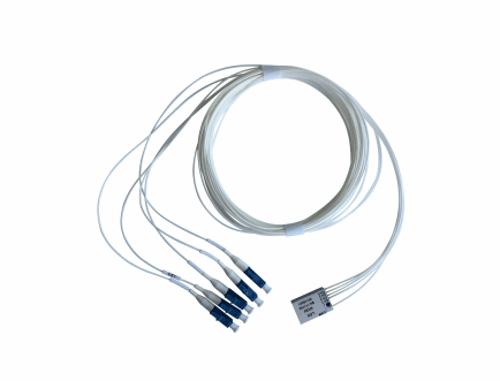Sapphire is now the mainstream material for the production of blue and white LEDs. The global sapphire crystal bar manufacturer Rubicon was founded in 2000. It mainly supplies sapphire single crystals and uses other crystallization techniques to manufacture IT components. The Kyropolus method produces sapphire crystal rods, which are relatively advantageous in terms of low defect density (Low Defect Density). Rubicon sapphire crystal rods are mainly supplied to LEDs, Radio Frequency Integrated Circuits (RFICs), blue lasers, optical parts, etc. Among them, LED applications are now the main source of Rubicon revenue. With the global demand for sapphire crystal rods for LEDs, significant growth since 2009, Rubicon's production capacity in the third quarter of 2010 is also fully loaded. In this context, its revenue and profit for the whole year of 2010 will record a record high, while Asia The region is its main source of revenue. Rubicon is currently producing sapphire crystal rods mainly in the Chicago area of ​​the United States. It has started construction of a new plant in neighboring Batavia, Illinois. The target is mass production in the first quarter of 2011. In addition, it is located in Malaysia. The new plant for the segment process will also be completed by the end of 2010. In 2010, Rubicon has a leading position in the global sapphire crystal rod market and continues to expand its production capacity. And because Rubicon has signed a medium- and long-term supply contract for 6-inch crystal rods with several LED factories, it expects that the 6-inch crystal rod will account for a further increase in its revenue after the mass production of the new Batavia plant. The use of crystal rods will be the focus of Rubicon development in 2011. LAN WDM - LAN Wavelength Division Multiplex
LWDM is a wavelength division multiplexing Lan-WDM technology based on Ethernet channels. Its channel interval is 200~800GHz, this range is between DWDM (100GHz, 50GHz) and CWDM (about 3THz). LWDM uses 12 wavelengths in the O-band (1260nm~1360nm) range from 1269nm to 1332nm, with a wavelength interval of 4nm (1269.23, 1273.54, 1277.89, 1282.26, 1286.66, 1291.1, 1295.56, 1300.05, 1304.58, 1309.14, 1313.73 , 1318.35nm).
The characteristic of LWDM working wavelength is that it is located near zero dispersion, with small dispersion and good stability. At the same time, LWDM can support 12-wave 25G, the capacity is increased, and the optical fiber can be further saved.
LAN WDM Splitter, LAN WDM Shenzhen GL-COM Technology CO.,LTD. , https://www.szglcom.com


Channel 1: Wavelength 1313.73nm, reuse the DML-1310 wavelength in 100G CWDM applications. Starting from this wavelength, the channel spacing of the wavelengths is about 4.5nm;
Channel 2: Wavelength 1309.14nm, which reuses the DML wavelength in 100G LanWDM applications;
Channel 3: Wavelength 1304.58nm, reuse the DML wavelength in 100G LanWDM application;
Channel 4: Wavelength 1300.05nm, reuse the DML wavelength in 100G LanWDM applications;
Channel 5: Wavelength 1295.56nm, which reuses the DML wavelength in 100G LanWDM applications;
Channel 6: Wavelength 1291.10nm, reuse the DML-1290 wavelength in 100G CWDM applications;
Channel 7: wavelength 1286.66nm, reuse the EML wavelength in 400G LanWDM applications;
Channel 8: wavelength 1282.26nm, reuse the EML wavelength in 400G LanWDM applications;
Channel 9: The wavelength is 1277.89nm, which reuses the EML wavelength in 400G LanWDM applications;
Channel 10: wavelength 1273.54nm, reuse the EML wavelength in 400G LanWDM applications;
Channel 11: The wavelength is 1269.23nm, which reuses the DML-1270 wavelength in 100G CWDM applications.